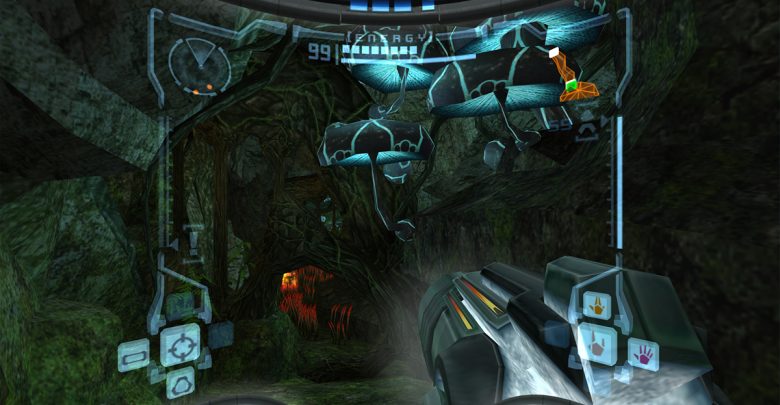Retro on Retro: Nintendo’s ‘Metroid Prime’
In Retro on Retro, our writers offer retrospectives on retro media. Today, Nicholas Villeneuve discusses Nintendo’s Metroid Prime, a sci-fi gaming classic.
 Nicholas Villeneuve
Nicholas VilleneuveMetroid Prime
Publisher: Nintendo
Developer: Retro Studios
Release date: November 17, 2002
In 2002, Metroid Prime defied all of its franchise and genre expectations. Now, sixteen years later, it still holds up and continues to influence shooter and adventure games to this day.
Taking place between Metroid and Metroid II, the player takes on the role of galactic bounty hunter Samus Aran as she responds to a distress call from a Space Pirate frigate orbiting the nearby planet Tallon IV. However, Samus discovers the crew has been slaughtered by its own genetically-modified creatures. She also encounters her archenemy, the cybernetic dragon Meta-Ridley, and chases him down to Tallon IV. On the planet surface, Samus uncovers the secrets of the extinct Chozo civilization.
Metroid Prime marked the return of the franchise — eight years and two console generations after Super Metroid on the SNES and revolutionized the franchise by moving away from traditional 2D side-scrolling graphics to a first-person perspective within a 3D environment. However, while Nintendo branded Metroid Prime as a “first-person adventure”, hardcore Metroid fans feared that Metroid’s unique non-linear gameplay would disintegrate in favour of first-person shooter gameplay in the likes of Doom and Halo. But, upon its release on November 17, 2002, gamers’ and critics’ skepticism evaporated, and Metroid Prime has since become one of the most critically acclaimed video games of all time and enjoyed commercial success with 2.82 million units sold.
The atmosphere of Tallon IV feels mysterious and epic as the player explores ancient ruins, frigid icefields, and magma caverns, encountering native wildlife and reading the lost records of the Chozo civilization. Despite the absence of any solid narrative or a well-defined protagonist, the player’s adventure and Samus’ adventure are neatly weaved together and immersive — as little details like the glare of Samus’ face on the player’s visor emphasize.
Metroid Prime’s exploration-based world design is key to its success. The game takes place in one vast interconnected world, with elevators and colour-coded doors separating different biomes. With every new beam weapon or suit upgrade, the player discovers new tactics with which to engage enemies, new game mechanics with which to interact, and entirely new areas to access for even more upgrades and secrets — all of which fuels further exploration and navigation. In essence, the game evolves alongside the player, empowering them through their eventual mastery of the game-world.
Upon its release, Metroid Prime broke several precedents of the first-person shooter genre, adding adventure game elements like exploration, platforming, and puzzles to the genre’s toolkit. Even 16 years later, Metroid Prime continues to endure as a modern gaming masterpiece. Playing this game on the Nintendo GameCube recently has been a truly memorable experience for me, and I recommend it as an absolute must-play.




